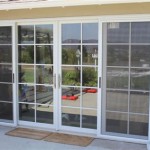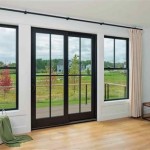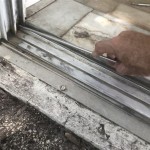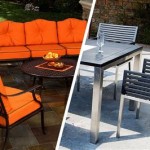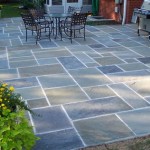Building a Fire Pit on a Concrete Patio
A fire pit can be an invaluable addition to any patio, providing warmth, ambiance, and a focal point for social gatherings. While fire pits are often associated with woodsy backyards, they can also be seamlessly integrated into a concrete patio environment. Building a fire pit on a concrete patio requires careful planning and execution to ensure safety, durability, and aesthetic appeal. This article outlines the essential steps involved in this project, highlighting key considerations for a successful outcome.
1. Planning and Preparation
Before embarking on the construction process, it's crucial to carefully plan and prepare the site for the fire pit. This involves several critical steps:
Determine the Location: Choose a location that is away from any structures, flammable materials, or overhead obstacles. Ensure that the chosen spot allows for adequate clearance around the fire pit for airflow and safety.
Consider the Size and Shape: The size of the fire pit should be proportional to the patio space and the intended usage. A larger fire pit can accommodate more people, while a smaller one might be more suitable for intimate gatherings. The shape can be circular, square, or rectangular, depending on personal preferences and the overall design scheme.
Prepare the Surface: Clear the designated area of any debris or obstacles. If the concrete patio is uneven or cracked, it's recommended to repair them before proceeding with the fire pit construction. This ensures a stable foundation and prevents potential safety hazards.
Check Building Codes: Consult local building codes and fire safety regulations to understand any limitations on the size, type, and location of fire pits within your area. This step is particularly important for ensuring compliance and minimizing risks associated with fire hazards.
2. Constructing the Fire Pit
The construction of a fire pit on a concrete patio can be approached using various methods, each with its own benefits and considerations. Two common approaches are discussed below:
2.1. Pre-Fabricated Fire Pit Kit
Using a pre-fabricated fire pit kit offers a convenient and efficient approach for building a fire pit on a concrete patio. These kits typically include all the necessary components, such as a fire bowl, a stand, and a safety screen. They are often made of durable materials like steel or cast iron and can be easily assembled with minimal tools.
Advantages: Ease of installation, readily available, often come with a protective screen, and can be relatively affordable.
Disadvantages: Limited customization options, may have a less personalized look compared to custom-built fire pits.
2.2. Custom-Built Fire Pit
Building a custom fire pit provides greater flexibility and allows for unique designs to complement the overall patio aesthetic. This usually involves using materials such as concrete blocks, stone slabs, or bricks.
Advantages: Highly customizable designs, can be tailored to specific size and shape requirements, and can offer a more unique and personalized look.
Disadvantages: Requires more time and effort to construct, may require specialized tools and knowledge, and can be more expensive than pre-fabricated kits.
2.3. Key Considerations for Both Approaches
Regardless of the construction method chosen, following these key considerations ensures a safe and functional fire pit:
- Fireproof Materials: Ensure that all materials used for the fire pit are fireproof, including the base, fire bowl, and any decorative elements. Choose materials that can withstand high temperatures without warping, cracking, or releasing harmful fumes.
- Fireplace Screen: Install a fire screen to prevent sparks and embers from escaping and causing potential hazards. This is particularly important for fire pits located close to structures or flammable materials.
- Ventilation: Ensure adequate ventilation around the fire pit to prevent smoke buildup and maintain safe air quality for all occupants.
- Safety Precautions: Always use caution when using the fire pit. Never leave a fire unattended, and ensure that children and pets are kept away from the burning area. Keep a readily available source of water nearby for emergencies.
3. Finishing Touches
After the construction of the fire pit is complete, adding finishing touches can enhance its aesthetic appeal and functionality:
Sealing: Sealing concrete blocks, bricks, or other porous materials with a sealant can protect them from water damage, stains, and weathering. This will extend the lifespan of the fire pit and maintain its appearance.
Decorative Elements: Adding decorative elements such as stones, pebbles, or landscaping features around the fire pit can enhance its visual appeal and integrate it seamlessly with the surrounding patio design.
Lighting: Installing lighting around the fire pit can create a captivating ambiance, especially during evening gatherings. String lights, lanterns, or solar-powered lights can be effective options.
Building a fire pit on a concrete patio requires careful planning, execution, and ongoing maintenance. By following the guidelines and recommendations outlined in this article, homeowners can create a safe, functional, and aesthetically pleasing fire pit feature that enhances their patio space and provides a cozy atmosphere for outdoor gatherings.

Diy Fire Pit How To Build A Patio Nest For Less

Diy Fire Pit Dangers Blackwater Concrete Gore Va

Diy Fire Pit How To Build A Patio Nest For Less

How To Build A Fire Pit On Concrete Diy Design Hometalk

Diy Fire Pit How To Build A Patio Nest For Less

Fire Pits Stone Concrete Pit Designs And Ideas Network

How To Build An Easy Backyard Fire Pit

Installing A Backyard Fire Pit We Moved Visit Ashleyburk Com

Beautiful Backyard Fire Pits Indy Decorative Concrete

Diy Fire Pit How To Build A Patio Nest For Less
Related Posts

